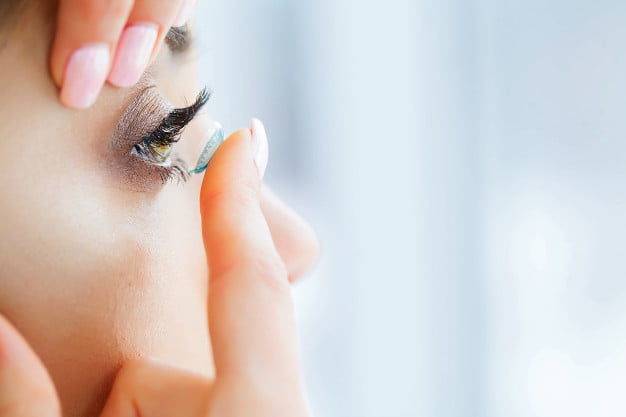
Since the very first contact lenses appeared on the eye care scene back in 1887, the benefits of an ‘invisible’ way to correct vision were clear to see. While the first contacts were made from glass, today’s lenses are made from lightweight and flexible silicone to provide a convenient, discreet, and comfortable way to correct and improve your eyesight.
With an estimated 3.6 million wearers in the UK today, we celebrate the wonders of ordering contact lenses.
Contact lenses work as very small prescription lenses that you wear in direct contact with your eye to correct vision problems and help support ocular health. They work by sticking to the tear film across the front of the eye, meaning that they move naturally with the eyeball to give you all-round vision.
The Italian inventor Leonardo Da Vinci is thought to have come up with a basic concept of the contact lens back in the 16th Century when considering how a glass bowl of water could help to solve refractive light issues in the eye.
It wasn’t until the 1800s that the first contact lenses started to appear, made from a glass lens that covered the whole of the eye. By the 1950s, the use of a much lighter non-porous plastic was used, which moved slightly when blinking to let oxygen reach the eyeball and enabled users to wear the lenses for much longer.
Disposable contact lenses arrived on the scene in the mid-1990s, bringing with them a whole new level of contact wearing convenience, hygiene, and ease of use. Single daily disposables as well as extended use (for 1, 2, or 4 weeks) disposable contact lenses are now widely available.
Today’s contact lenses are typically made from silicone hydrogel which lets five times more oxygen reach the eye to create a longer-lasting, fresh and comfortable experience for the wearer. And, by adding silicone to the water-absorbing hydrogel plastic, you also get a contact lens that stays moist for longer.
Contact lenses can be used to correct a host of vision problems, including short-sightedness, long-sightedness, and astigmatism. And children can also wear them, with 13 being the average teen age to be prescribed contact lenses.
Unlike glasses, contact lenses won’t steam up or react to changes in temperature and remain unaffected but the weather, including rain. This makes contact lenses a great choice for active people who want to have clear vision without the challenge of wearing glasses while on the move or playing their favourite sport.
The latest innovations in contact lens technology include reactive lenses which, while not a substitute for sunglasses, can respond to changes in light, helping to protect delicate eyes from the harmful effects of UV and blue light.
Cosmetic contact lenses are also becoming increasingly popular. As well as being used for corrective eyesight purposes, contact lenses can also be used to temporarily change the colour of an individual eye. For your eye health, it is recommended that you only purchase both corrective and non-prescription coloured contact lenses from an eye specialist.
Read Also:




























